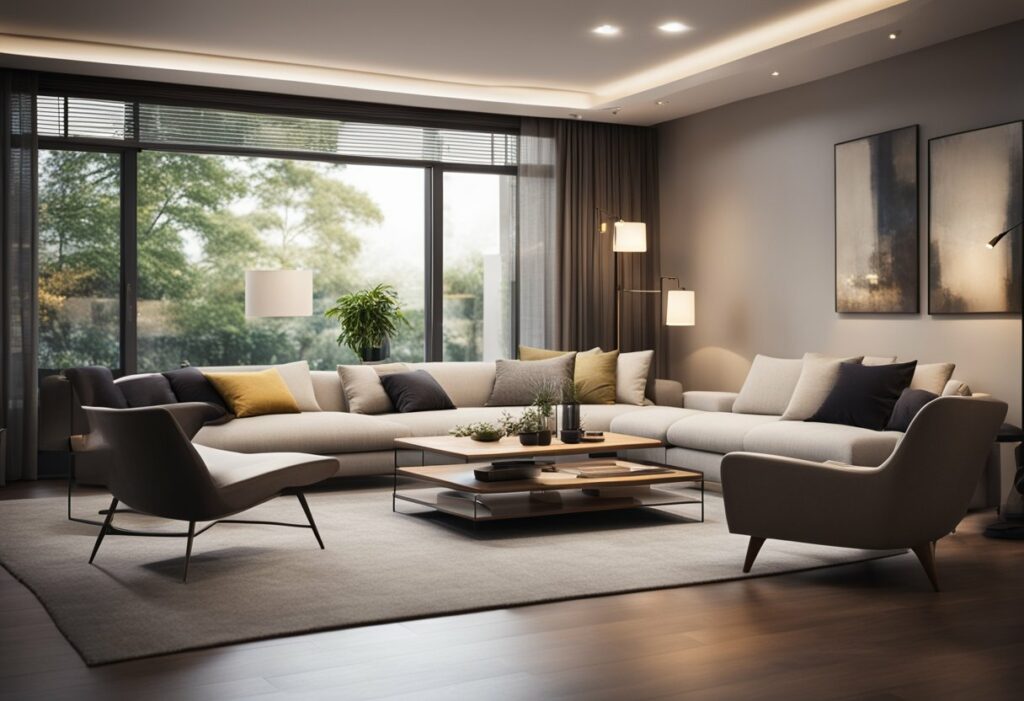Interior Lighting Designer: Transforming Spaces with Light
Are you looking to transform your living space into a warm and inviting atmosphere? Look no further than an interior lighting designer. An interior lighting designer is a professional who can create the perfect ambiance and mood for your home through lighting. They have the expertise to design lighting that is both functional and aesthetically pleasing.
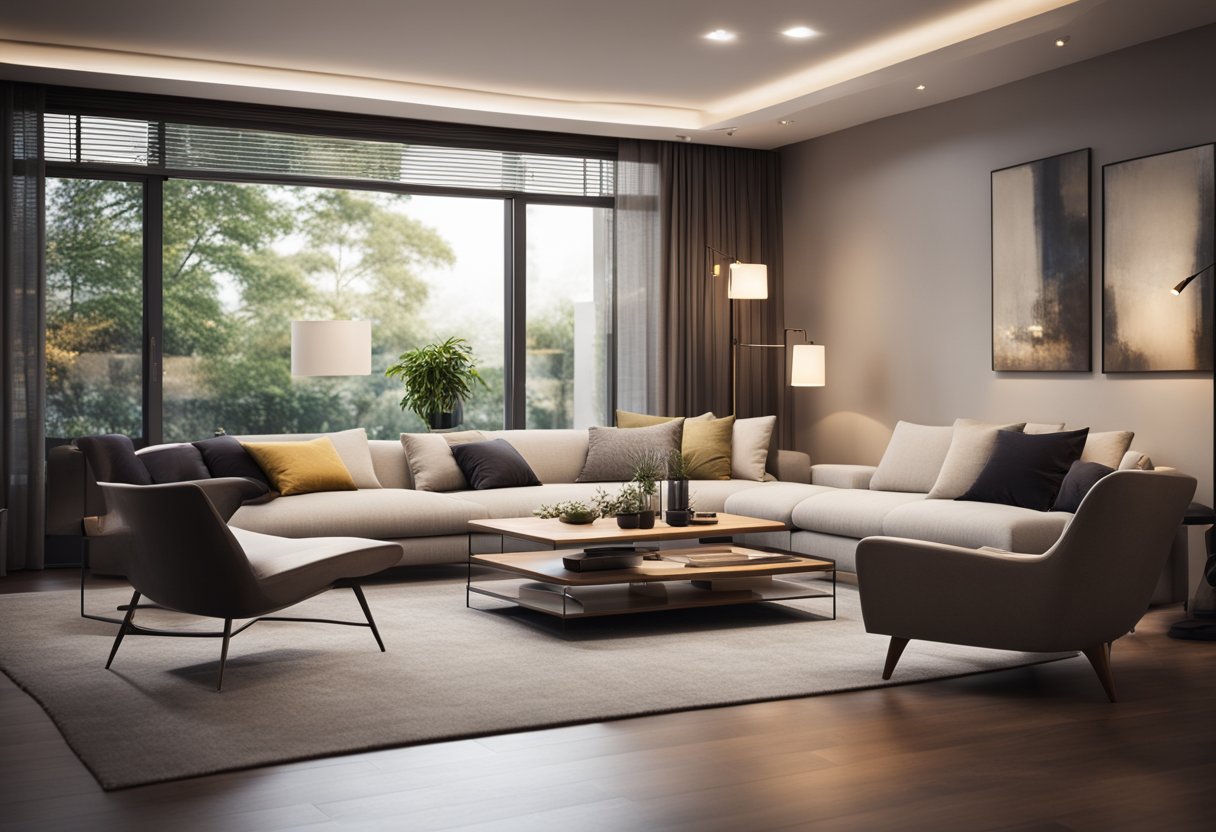
Fundamentals of Interior Lighting Design include understanding the different types of lighting, such as ambient, task, and accent lighting. Ambient lighting is the primary source of light in a room, while task lighting is used for specific activities such as reading or cooking. Accent lighting is used to highlight specific features in a room. An interior lighting designer can help you choose the right type of lighting for your space, taking into account factors such as natural light, room size, and ceiling height.
Creative Aspects and Practical Implementation of interior lighting design involve selecting the right fixtures, bulbs, and finishes to create the desired effect. An interior lighting designer can also help with the placement of lighting fixtures to ensure that they are both functional and visually appealing. They can also help with the installation of lighting systems, ensuring that they are properly wired and safe to use. With the help of an interior lighting designer, you can create a beautiful and inviting space that is both functional and aesthetically pleasing.
Key Takeaways
- An interior lighting designer can create the perfect ambiance and mood for your home through lighting.
- Understanding the different types of lighting is essential to interior lighting design.
- An interior lighting designer can help with the creative aspects and practical implementation of lighting design.
Fundamentals of Interior Lighting Design
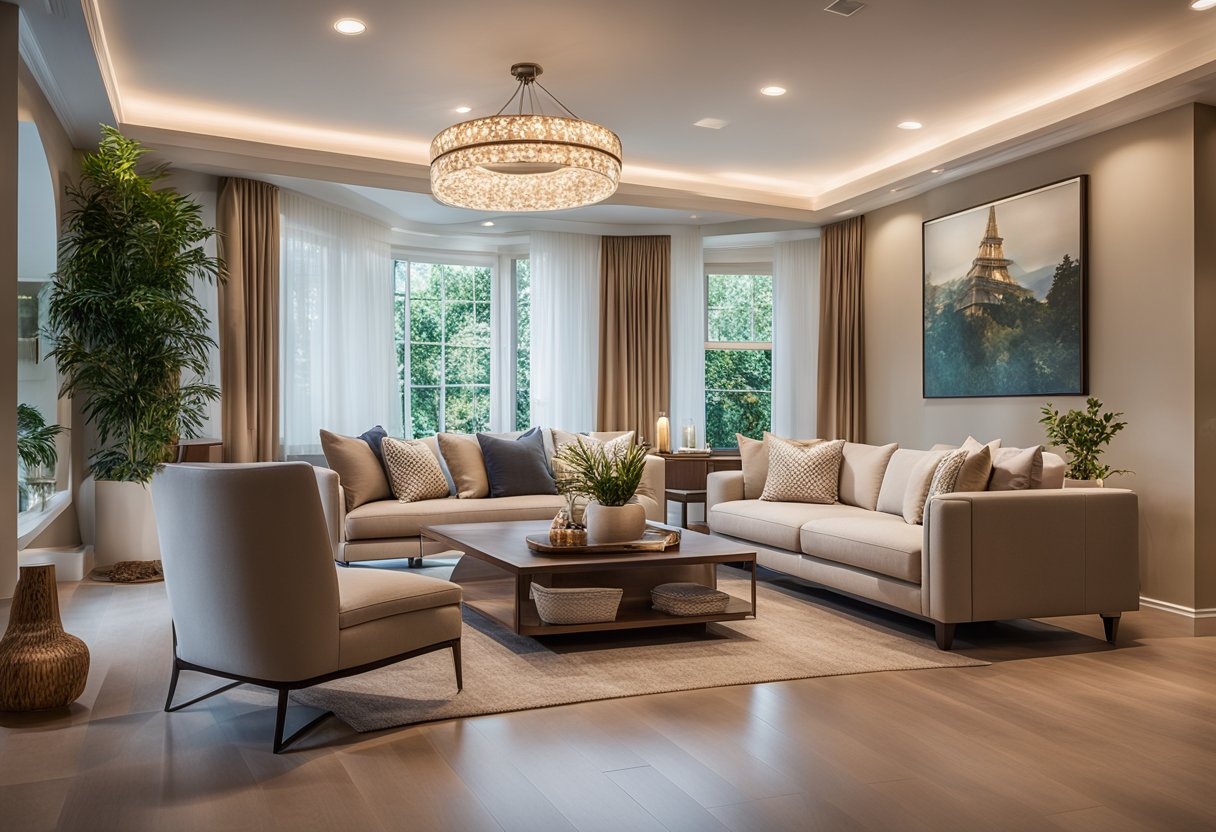
As an aspiring interior lighting designer, you need to have a strong foundation in the subject. This section will cover the essential principles and concepts that guide successful lighting design.
Understanding Lighting Types
There are three main types of lighting: ambient, accent, and task lighting. Ambient lighting provides general illumination to the entire room, and it is the base layer of lighting. Accent lighting is used to highlight specific areas or objects, such as artwork or architectural features. Task lighting is used to provide focused illumination for specific tasks, such as reading or cooking. Understanding the different types of lighting and their purposes is crucial to creating a dynamic and flexible lighting scheme.
Lighting Design Principles
A well-rounded understanding of lighting design principles is essential for creating lighting solutions that balance functionality, aesthetics, and energy efficiency. The core principles and elements of architectural interior lighting design include luminance patterns, color temperature, and the role of shadows. By mastering these principles, you can create lighting designs that enhance the mood and atmosphere of a space.
Role of Natural Light
Natural light, also known as daylight, is a crucial element of interior lighting design. It can provide a sense of warmth and comfort to a space, and it can also help reduce energy costs by reducing the need for artificial lighting. When designing a lighting scheme, it is essential to consider the amount of natural light available in the space and how it can be used to enhance the overall design.
Selecting the Right Bulbs
Selecting the right bulbs is an important aspect of interior lighting design. LED lights are becoming increasingly popular due to their energy efficiency and long lifespan. When selecting bulbs, it is essential to consider the color temperature of the light, which can affect the mood and atmosphere of the space. Warm light (2700K-3000K) is ideal for creating a cozy and comfortable atmosphere, while cool light (4000K-5000K) is better suited for workspaces and areas where concentration is required.
By understanding the fundamentals of interior lighting design, you can create lighting schemes that enhance the beauty and functionality of a space. With the right lighting, you can create a warm and inviting atmosphere that reflects your unique style and personality.
Creative Aspects and Practical Implementation
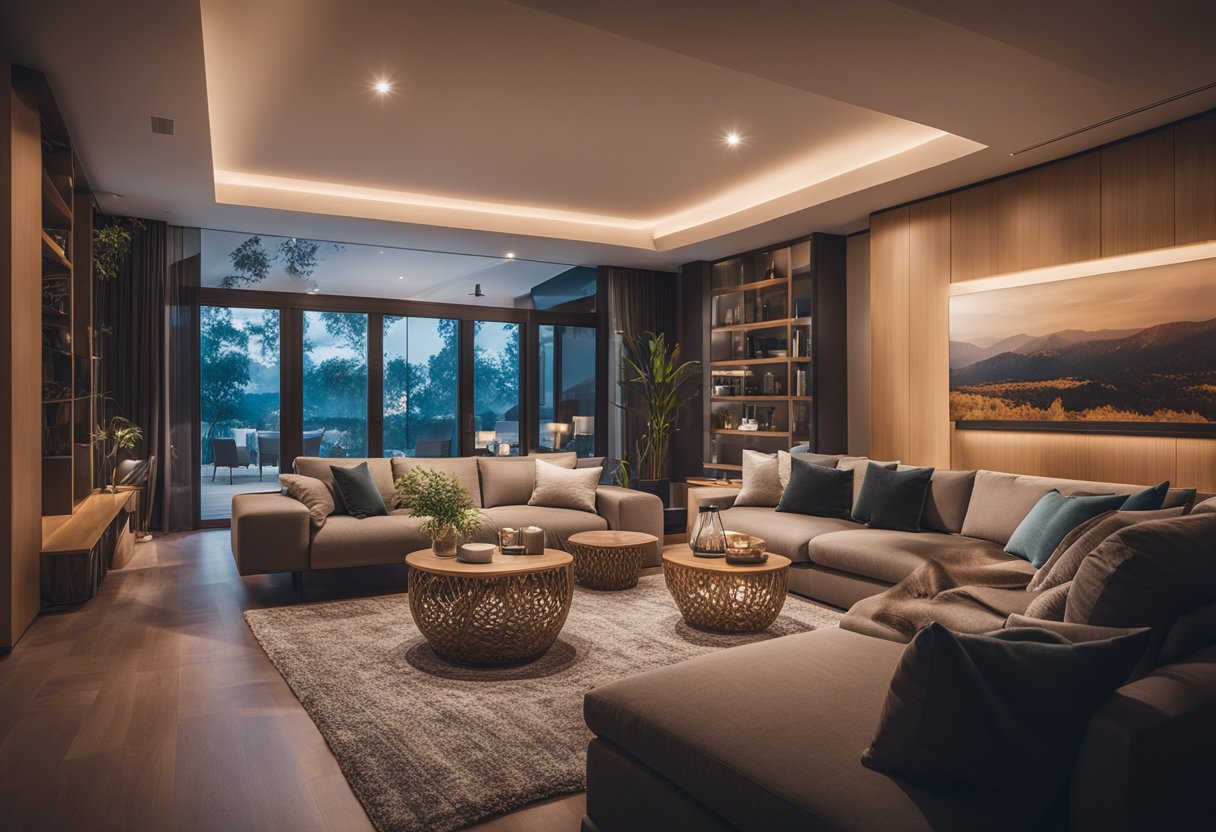
As an interior lighting designer, you have the opportunity to create unique and inspiring lighting solutions that can transform any space. By combining creativity with practical implementation, you can achieve an optimal lighting design that enhances the ambiance and functionality of any interior. Here are some aspects to consider when designing your lighting scheme.
Innovative Lighting Fixtures and Styles
The lighting fixtures you choose can make a significant impact on the overall look and feel of a room. From chandeliers to pendant lights, sconces to wall lights, the styles, materials, and shapes of your lighting fixtures should complement the interior design of the space. Innovative designs and unique fixtures can add a touch of personality to any room and create a memorable impression.
Strategic Placement for Optimal Effect
Strategic placement of lighting fixtures is crucial to achieving an optimal lighting design. Spotlights can be used to highlight specific furniture pieces or artwork, while recessed lights can create a seamless and subtle lighting effect. Wall lights can provide soft and warm ambient lighting, while pendant lights can add a touch of drama and elegance. By positioning your lighting fixtures in the right places, you can achieve the desired effect and create a cohesive lighting scheme.
Integrating Lighting with Interior Decor
Integrating lighting with interior decor is essential for creating a cohesive and harmonious design. The colour and texture of your lighting fixtures should complement the furniture, flooring, and wall colours in the room. By using lighting fixtures that match the interior design, you can create a seamless and integrated look that enhances the overall aesthetic.
Enhancing Ambiance with Lighting Control
Lighting control systems, such as dimmer switches, can enhance the ambiance of any room. By adjusting the lighting levels, you can create different moods and atmospheres that are suitable for different occasions. Mood lighting can create a relaxing and calming environment, while ambient lighting can provide a warm and welcoming atmosphere. By incorporating lighting control systems into your lighting design, you can achieve a versatile and adaptable lighting scheme.
In conclusion, by combining creativity with practical implementation, you can achieve an optimal lighting design that enhances the ambiance and functionality of any interior. By considering innovative lighting fixtures and styles, strategic placement, integrating lighting with interior decor, and enhancing ambiance with lighting control, you can create a memorable and inspiring lighting scheme.
Frequently Asked Questions
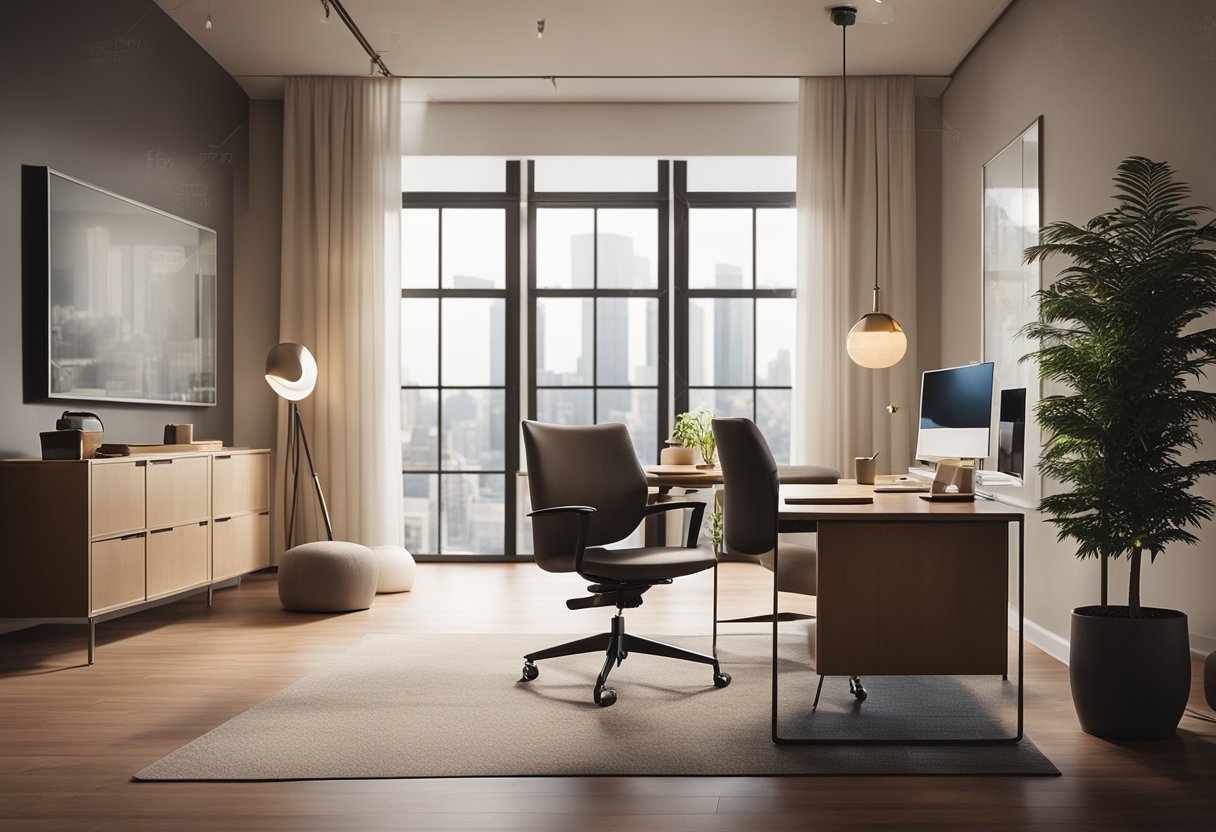
How can I transform my living space with creative lighting design?
Creative lighting design can transform any living space by adding depth, texture, and warmth. You can use a combination of ambient, task and accent lighting to create a mood that suits your lifestyle. By using lighting to highlight architectural features, artwork or furniture, you can create a dynamic and visually interesting space. You can also experiment with different lighting fixtures such as pendant lights, chandeliers, and wall sconces to add a touch of elegance and sophistication.
What exciting career opportunities exist for lighting designers in the industry?
As lighting technology continues to evolve, the demand for lighting designers is increasing. Lighting designers can work in a variety of industries including architecture, interior design, theatre, and film. They can also work for lighting manufacturers, lighting design firms, and lighting control companies. Exciting career opportunities exist in areas such as sustainable lighting design, smart lighting design, and lighting for virtual and augmented reality.
In what ways does professional lighting design enhance the atmosphere of a home?
Professional lighting design can enhance the atmosphere of a home in many ways. It can create a warm and welcoming environment, highlight architectural features, and bring attention to artwork or furniture. It can also create a sense of drama and intrigue by using lighting to accentuate certain areas of a room. Professional lighting design can also be used to create a sense of spaciousness and depth by using a combination of ambient and task lighting.
What should one expect to invest for a bespoke lighting design project?
The cost of a bespoke lighting design project can vary depending on the complexity of the project and the level of customization required. It is important to work with a professional lighting designer who can create a design that meets your needs and budget. The cost of the project will depend on factors such as the number of lighting fixtures required, the type of fixtures, and the level of automation required.
Could you shed some light on the collaborative process between lighting designers and architects?
Collaboration between lighting designers and architects is essential to create a cohesive and well-designed space. Lighting designers work closely with architects to ensure that the lighting design complements the architecture of the space. They collaborate to create a lighting plan that enhances the overall design of the space. Lighting designers also work with electricians and contractors to ensure that the lighting design is properly installed.
What are the latest trends in interior lighting that are captivating designers?
The latest trends in interior lighting include the use of LED lighting, smart lighting systems, and sustainable lighting design. Designers are also experimenting with the use of colour-changing lighting fixtures to create a dynamic and visually interesting space. Pendant lights and chandeliers are also popular choices for interior lighting design as they add a touch of elegance and sophistication to any space.

